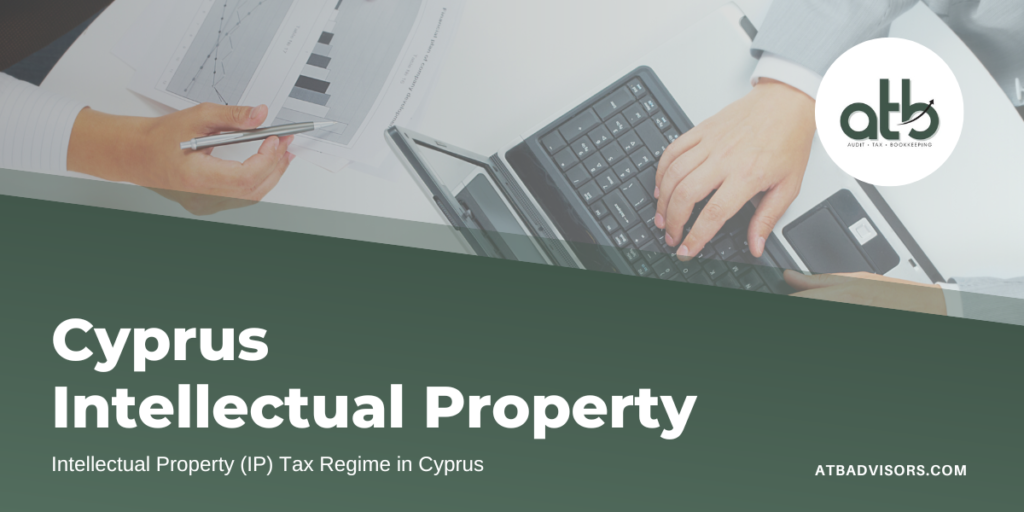
The new IP regime (IP Box) as amended and applied from 1st July 2016 onwards is aligned with the provisions of Action 5 of the OECD’s Base Erosion Profit Shifting (BEPS) project. The new IP Box complies with the provisions of the modified ‘nexus approach’, whereby for an intangible asset to qualify for the benefits of the regime, there needs to be a direct link between the qualifying income and the qualifying expenses contributing to that income.
As a result, an amount equal to 80% of the qualifying profits earned from qualifying intangible assets will be allowed as a tax-deductible expense.
The following demonstration is for illustrative purposes and only for the prospective new business of the client. The examples analyzed below are based on a hypothetical scenario of the activities of a Cyprus IP Company.
Definitions:
- Qualifying intangible assets: Computer software (amongst others).
- Qualifying profit: the proportion of the overall income (OI) derived from the qualifying asset, corresponding to the fraction of the qualifying expenditure (QE) plus the uplift expenditure (UE) over the overall expenditure (OE) incurred for the qualifying intangible asset.
- Qualifying profit formula: QP = OI @ QE + UE / OE.
- Overall Income: royalties and license income (amongst others) LESS any direct costs.
- Qualifying Expenditure: sum of all R&D costs for the development, improvement or creation of qualifying intangible assets (software) such as wages and salaries, commissions associated with R&D, outsourcing costs associated with R&D to non-related parties.
- Uplift Expenditure: the lower of 30% of qualifying expenditure AND the total cost of acquisition of the qualifying intangible assets, plus the cost of outsourcing to relates parties of any R&D activities in relation to these assets.
- Overall Expenditure: Sum of qualifying expenditure and total cost of acquisition of qualifying assets, plus the cost of outsourcing to related parties of any R&D activities in relation to these assets.
Two scenarios analyzed below which take into consideration variables such as:
- Asset internally developed
- Asset acquired
- R&D costs outsourced to third parties
Senario 1
The asset was created/developed/improved internally, with R&D costs being undertaken by company staff.
| EUR | |
| Overall Income (OI) from IP | 1.000.000 |
| Overall Expenditure (OE) R&D costs incurred internally for creation and development | 500.000 |
| Qualifying Expenditure (QE)Internal R&D for creation and development of asset | 500.000 |
| Uplift expenditure lower for:30% of qualifying expenditureTotal cost of acquisition + cost of outsourcing R&D to related parties (NIL) | 150.000 |
| QP = OI @ QE + UE / OE€1m @ (€500k @ €0) / €500k | 1.000.000 |
| 80% of QP | 800.000 |
| Taxable Profit (€1m – €800k) | 200.000 |
| Corporation Tax at 12.5% | 25.000 |
| Effective Tax Rate (€25k / €1m) | 2.5% |
Scenario 2:
The asset was acquired with subsequent R&D costs for improvement of the asset outsourced to non-related parties.
| EUR | |
| Overall Income (OI) from IP | 1.000.000 |
| Overall Expenditure (OE) – Cost of acquisition – R&D costs for improvement of the asset outsourced to non RPs | 300.000 200.000 |
| Qualifying Expenditure (QE) R&D costs for improvement of the asset outsourced to non RPs | 200.000 |
| Uplift expenditure lower for: 30% of qualifying expenditure Total cost of acquisition + cost of outsourcing R&D to related parties (300.000) | 60.000 |
| QP = OI @ QE + UE / OE€1m @ (€200k @ €60k) / €500k | 520.000 |
| 80% of QP | 416.000 |
| Taxable Profit (€1m – €416k) | 584.000 |
| Corporation Tax at 12.5% | 73.000 |
| Effective Tax Rate (€73k / €1m) | 7.3% |
Conclusion:
As you can see from the above calculations the effective tax exposure of the Company will be anywhere from 2.5% Corporation Tax to 7.3% Corporation Tax depending mainly on whether the asset was acquired or developed internally as well as if R&D costs for improvement and development are carried out by the Company itself or by third parties.
In the case where there are salaries of 5-6-7 staff for example these will of course qualify for development/improvement of the asset (R&D) therefore this is on its own a step closer to the minimum 2.5% of effective tax.
A combination of purchased assets and new assets could also be the case where on one asset you can enjoy a 2.5% of effective tax and on another 5% of effective tax depending on the circumstances mentioned above.
At this point, we want to stress the fact that the IP Box even though it is simple in its explanation it needs proper tax planning and record keeping.
In addition, a tax ruling in advance is always advisable
